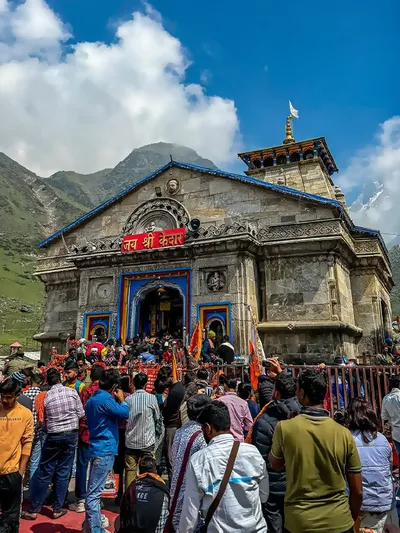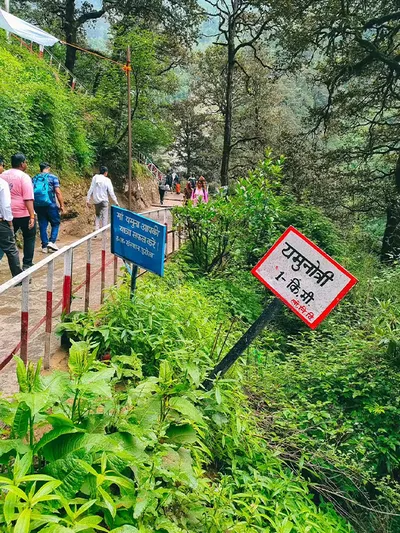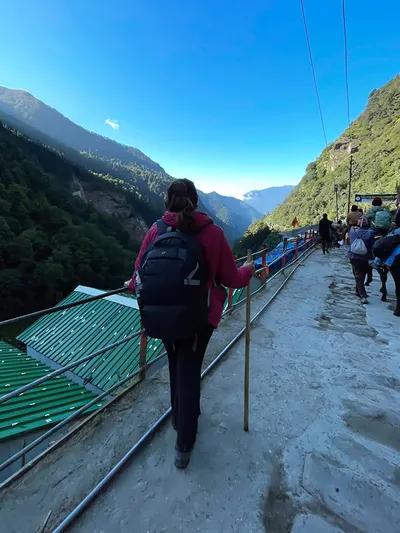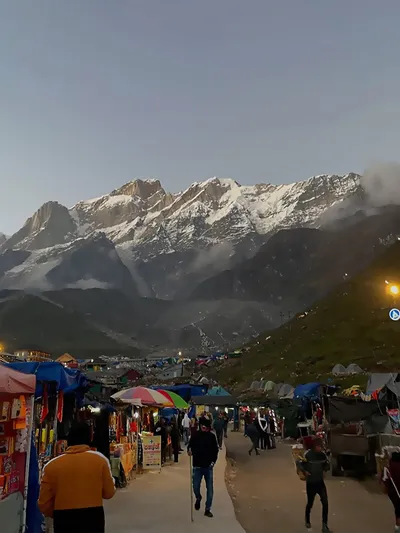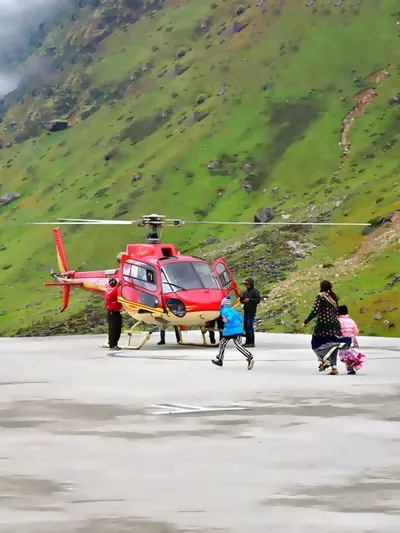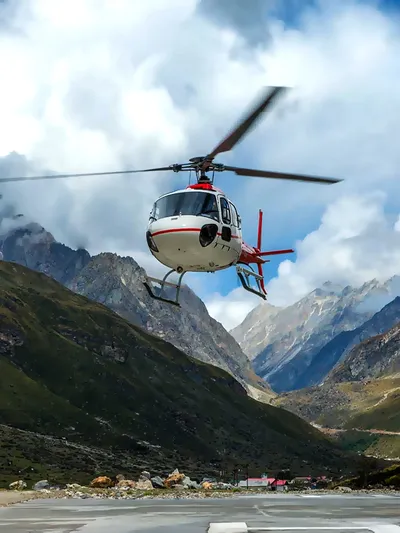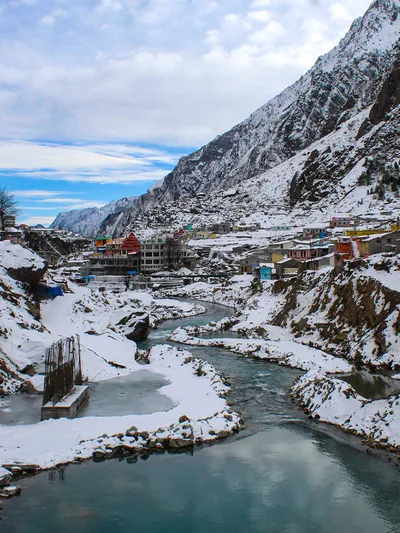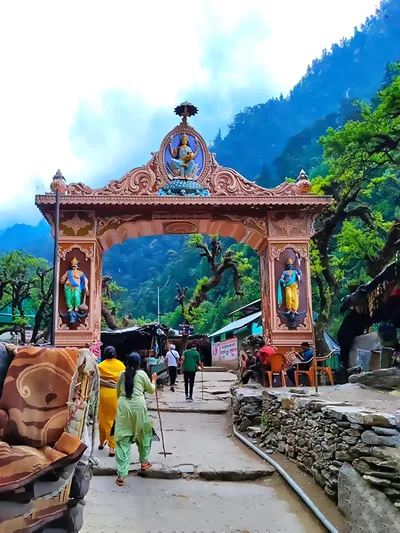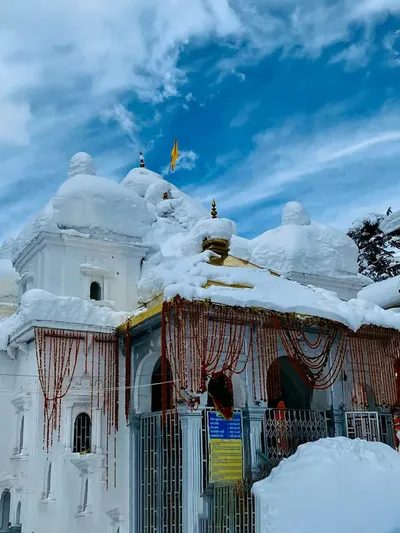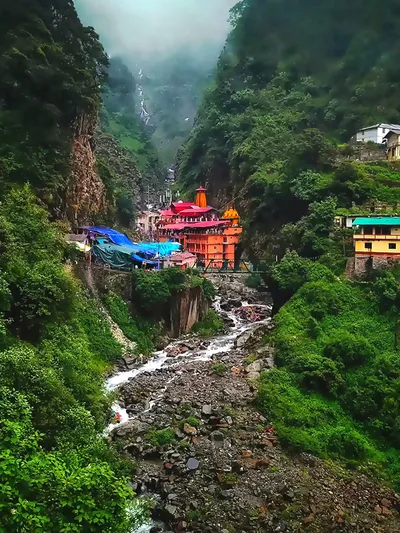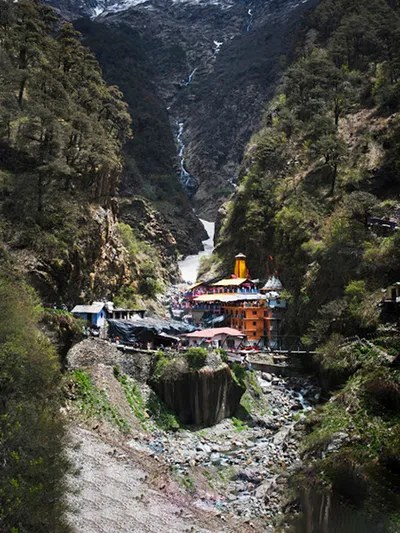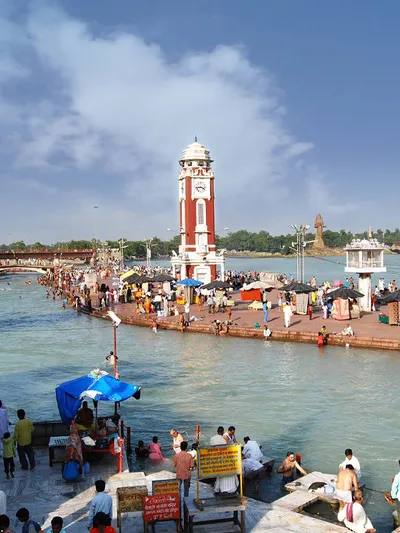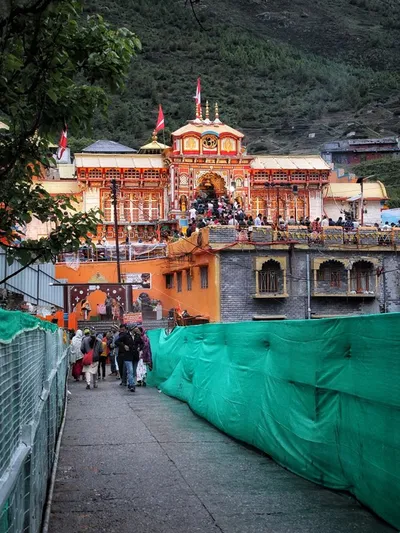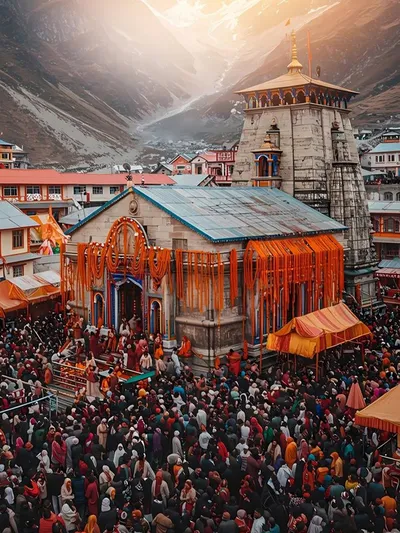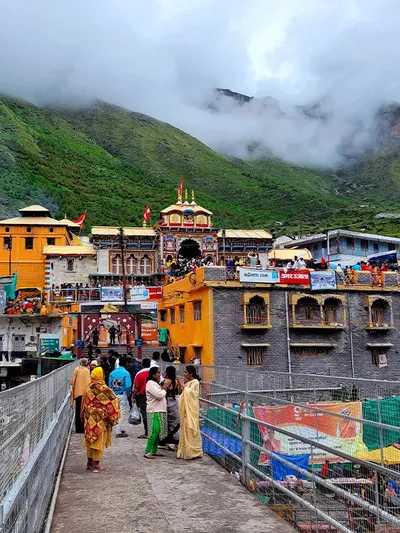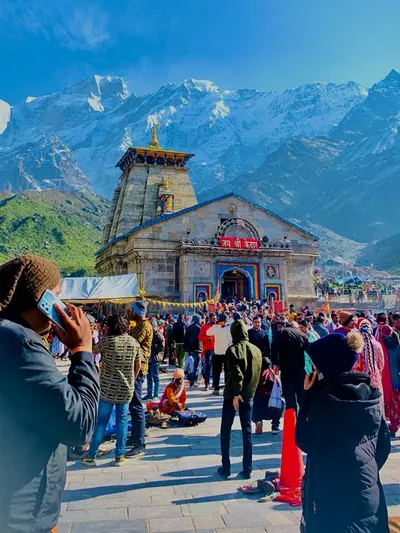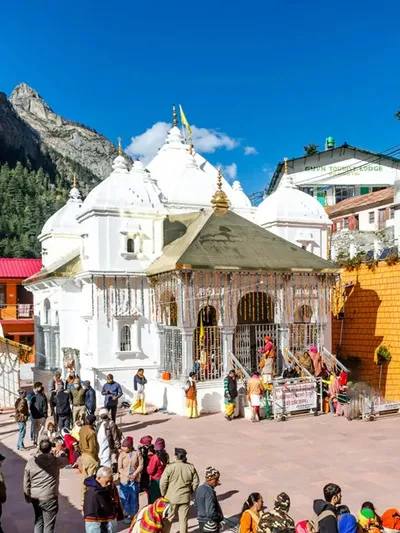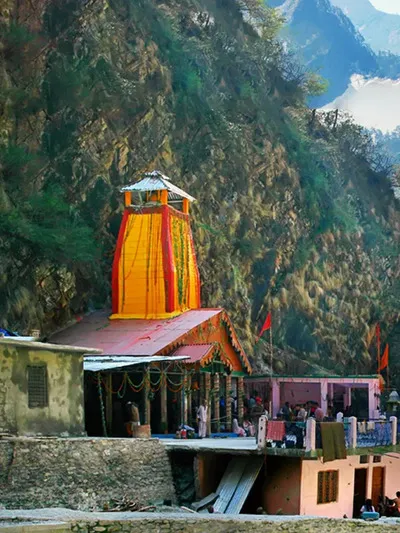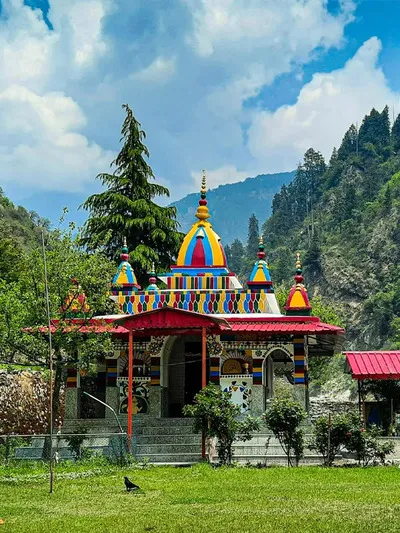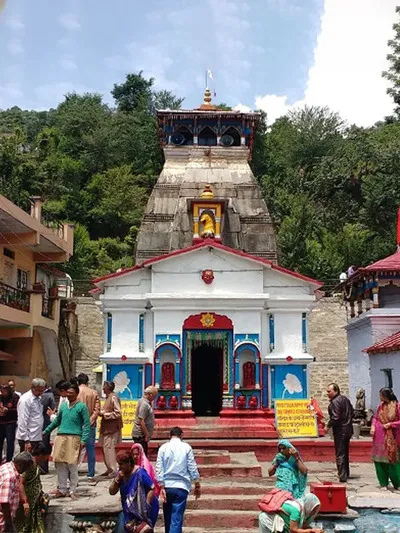Rudranath – The Third of the Panch Kedars
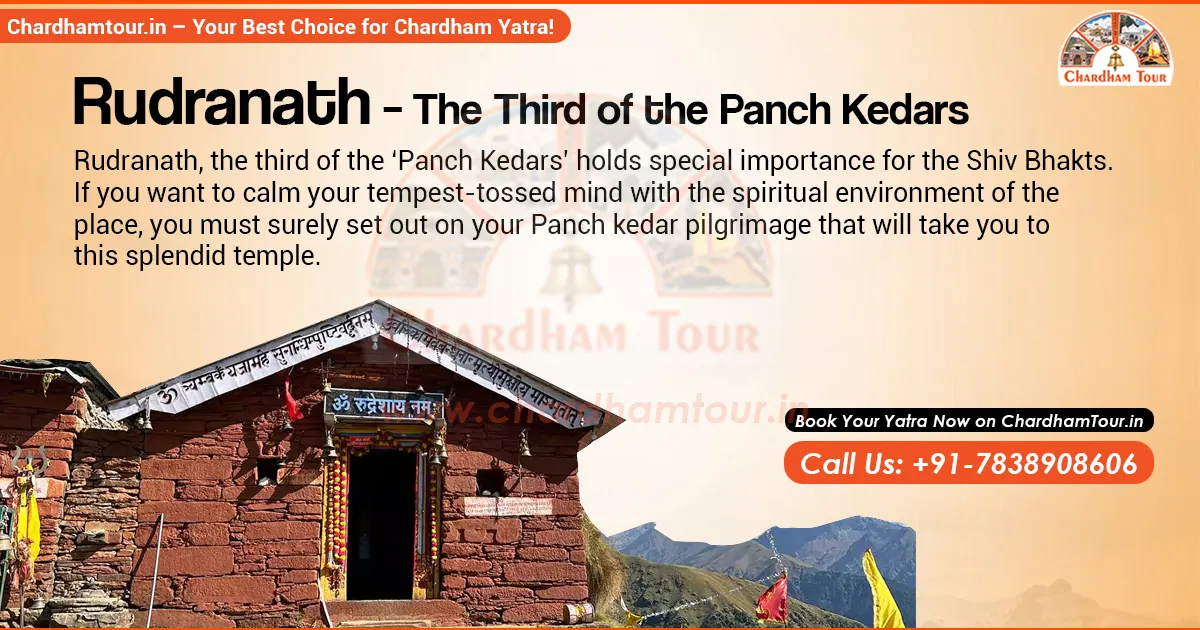
Rudranath is the third temple among the Panch Kedars and is very special for Shiva devotees. If you are planning a Panch Kedar pilgrimage, this holy place gives you a peaceful feeling and helps your mind feel more relaxed. If you want to know more, keep reading about Rudranath Temple, one of the Panch Kedar.
This temple is located at 3,600 meters in the Chamoli district. Around it, you will see beautiful rhododendron bushes and mountain hills. Many people feel that going to Rudranath brings them peace and blessings. The temple may be small, but the spiritual energy there is very powerful.
The Story Behind Rudranath Temple
- Rudranath is one of the five Panch Kedar temples, and all of them are connected to the story from the Mahabharata.
- After the war with the Kauravas, where they had to kill their relatives, the Pandavas came here to seek Lord Shiva's forgiveness. To avoid meeting them, Lord Shiva took the form of a bull and went underground to stay hidden.
- The Pandavas didn’t stop searching, and people believe Lord Shiva’s body showed in parts at different places — his hump at Kedarnath, arms at Tungnath, middle part at Madhyamaheshwar, face at Rudranath, and head with hair at Kalpeshwar.
- People worship Lord Shiva’s face as Neelkanth Mahadev at Rudranath. The Shivalinga, which is about 3 feet high. People believe it has formed naturally by itself.
Temple Worship and Important Rituals
- In winter, the idol is taken to Gopeshwar in a special parade called the Doli Yatra.
- When summer starts, the idol is carried back to Rudranath. Before placing it in the temple, people gather to pray to Vandevi.
- The priests who perform the rituals belong to the Bhatt and Tiwari families of Gopeshwar.
- Every morning, the priests decorate the lingam, and in the evening, they remove the decorations. Taking part in the morning ritual gives a peaceful feeling.
- Pilgrims often take a holy bath in nearby water tanks called Mana Kund, Surya Kund, Chandra Kund, and Tara Kund.
Places to Visit near Rudranath
Nandikund
Nandi Kund is a beautiful lake in the Garhwal Himalayas, located between Madhyamaheshwar and Kalpeshwar, at a height of around 3,500 to 4,800 meters. The Nandikund lake covers around 1.5 kilometers and is the place where the Madhyamaheshwar Ganga River begins. Many travelers visit this peaceful spot to enjoy the natural beauty and the calm surroundings.
Anusuya Devi Temple
In Chamoli, Anusuya Devi Temple is a popular place for pilgrims. It is dedicated to Goddess Sati. She was married to Atri Muni, a respected sage who was one of the seven great sages known as the Sapta Rishis ( Sapta means seven, and Rishis means sages in Sanskrit ). The temple is very special for spiritual reasons, and many people come here to pray and feel peaceful in the positive atmosphere.
Mandal Village
Mandal is a small and peaceful village in the Chamoli district of Uttarakhand. It is one of the hidden villages in Uttarakhand that many people don’t know about, but it’s a special place to visit. This village is surrounded by the fresh and stunning Garhwal Himalayas. For a unique experience, this spot is best to explore if you want to enjoy nature away from the busy city life.
Things to Do in Rudranath
Trekking
You can also visit the green, peaceful meadows of Liti Bugyal and Panar Bugyal nearby. These places are very calm and beautiful, and going there while you visit Rudranath will be a great experience.
Camping
Visitors like pilgrims and travelers have the chance to camp in the green Bugyals nearby. Camping can be a simple and nice option for staying during the pilgrimage.
Bathing in Holy Kunds ( Water Tanks )
Close to the temple, there are holy water tanks named Surya Kund, Chandra Kund, Mana Kund, and Tara Kund. People believe that taking a dip here washes away negativity.
Bird Watching and Photography
Rudranath is surrounded by nature, with colorful birds and beautiful plants. If you like taking photos or watching birds, you’ll enjoy it here.
How to Reach Rudranath
By Plane
Jolly Grant Airport in Dehradun is the nearest airport to Rudranath, located about 258 km away. From the airport, you can take a taxi to Gopeshwar or Saggar village. Jolly Grant Airport has daily flights to and from Delhi.
By Railway
Closest railway station to Rudranath is Rishikesh about 241 km away. From there, you can take a taxi or bus to Gopeshwar. Rishikesh has good train connections to the main towns in North India, and trains come here regularly.
By Road
From ISBT Kashmiri Gate in New Delhi, you can take a bus to Rishikesh. Then, from Rishikesh buses and taxis are available to reach Gopeshwar. It's connected to big towns in Uttarakhand by well maintained roads.
Route Map: Delhi → Meerut → Haridwar → Rishikesh → Devprayag → Srinagar → Rudraprayag → Gopeshwar → Sagar Village → 19 km Trek → Rudranath
Climate
Summer Season (April to August) - Summer in Rudranath is very pleasant, with cool and comfortable weather. The temperature stays between 15 to 21°C. It's the best time to enjoy the views and go for hikes around the area.
Monsoon Season (September to November) - Rain makes Rudranath green and peaceful, but the trek gets tricky. Be careful and carry rainwear.
Winter Season (December to March) - The temple remains closed for Darshan from November to April due to heavy snowfall, which covers the whole route to the temple. The temperature goes till -4 degrees Celsius and may even go down till zero levels.
The best time to visit Rudranath is from April to November.
Festival
Every year, a fair is held at the temple on the full moon day in the Hindu month of Shravan. It happens between July and August. The fair is mostly visited by local people. Many devotees stop to pray at the ancient swords stuck in the rocks. People believe these swords belonged to the Pandava brothers.
Opening and Closing Dates of Rudranath
Opening Date
The temple opens for darshan around mid-May, when summer begins. The idol is taken in a special doli from Gopeshwar. Before the idol enters the temple, devotees pray to Vandevi, the protector of the region.
Closing Date
Due to extreme cold and heavy snowfall, the temple stays closed during winter. The idol of the lord is then moved to the nearby village of Gopeshwar, where people can still visit and pray.
Travel Tips
At Rudranath Temple, the morning aarti begins at 8 AM, and the evening aarti takes place at 6:30 PM every day.
The path to Rudranath is tough and a little bit risky, but the views give a wonderful experience.
Start your trek early in the morning so you don’t have to walk in the dark or face bad weather. Plus the morning views are beautiful.
Long trek and high altitude can make you tired and thirsty. Keep ORS packets and dry fruits like almonds or dates with you to stay active.
Conclusion
Rudranath is a peaceful and special place for those who want to connect with Lord Shiva and enjoy nature’s beauty. This temple is one of the holy Panch Kedar and gives you a special spiritual feeling in the Himalayas. The trek may be challenging but the views, holy kunds and nearby meadows make it amazing. When you visit Rudranath, you get blessings and feel peaceful inside. The temple’s history, celebrations, and festivals make the journey meaningful. Travelers can also explore nearby places like Mandal village and Anusuya Devi Temple for a better experience. Best time to visit is between April and November when weather is pleasant and the temple is open. If you plan your trip carefully Rudranath will be a memorable and joyful adventure for both pilgrims and nature lovers.
